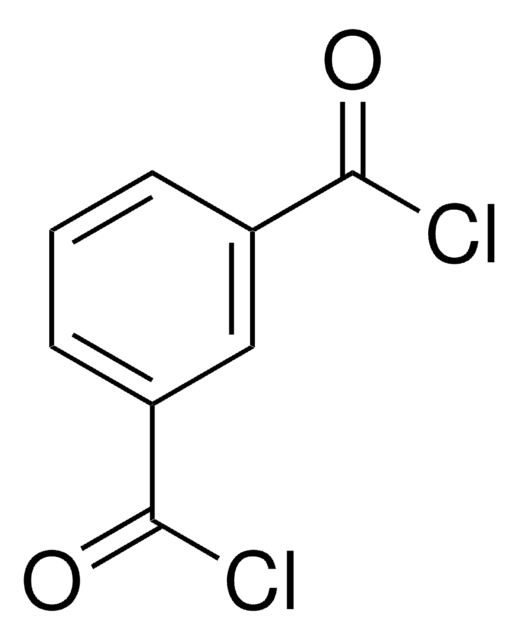120871
Terephthaloyl chloride
≥99%, flakes
Synonym(s):
Terephthalic acid chloride, Terephthaloyl dichloride
About This Item
Recommended Products
vapor density
7 (vs air)
vapor pressure
0.02 mmHg ( 25 °C)
Assay
≥99%
form
flakes
bp
266 °C (lit.)
mp
79-81 °C (lit.)
solubility
ethanol: soluble 100 mg/mL, clear, colorless
SMILES string
ClC(=O)c1ccc(cc1)C(Cl)=O
InChI
1S/C8H4Cl2O2/c9-7(11)5-1-2-6(4-3-5)8(10)12/h1-4H
InChI key
LXEJRKJRKIFVNY-UHFFFAOYSA-N
Looking for similar products? Visit Product Comparison Guide
General description
Application
Legal Information
Signal Word
Danger
Hazard Statements
Precautionary Statements
Hazard Classifications
Acute Tox. 3 Inhalation - Eye Dam. 1 - Skin Corr. 1A - STOT SE 3
Target Organs
Respiratory system
Storage Class Code
6.1A - Combustible acute toxic Cat. 1 and 2 / very toxic hazardous materials
WGK
WGK 1
Flash Point(F)
356.0 °F - closed cup
Flash Point(C)
180 °C - closed cup
Personal Protective Equipment
Certificates of Analysis (COA)
Search for Certificates of Analysis (COA) by entering the products Lot/Batch Number. Lot and Batch Numbers can be found on a product’s label following the words ‘Lot’ or ‘Batch’.
Already Own This Product?
Find documentation for the products that you have recently purchased in the Document Library.
Articles
Atomic layer deposition meets various needs including semiconductor device miniaturization and nanoparticle coating.
Atomic layer deposition meets various needs including semiconductor device miniaturization and nanoparticle coating.
Atomic layer deposition meets various needs including semiconductor device miniaturization and nanoparticle coating.
Atomic layer deposition meets various needs including semiconductor device miniaturization and nanoparticle coating.
Our team of scientists has experience in all areas of research including Life Science, Material Science, Chemical Synthesis, Chromatography, Analytical and many others.
Contact Technical Service










